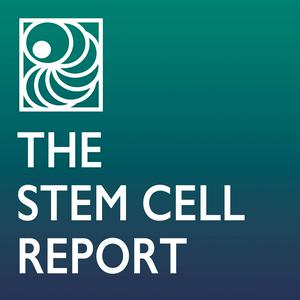Leaving an Imprint: The Function, Impact, and Detection of Epigenetic Marks
Parent-specific epigenetic marks (imprints) leading to parent-specific gene expression are crucial for normal growth and development, yet their mechanisms of establishment and maintenance are not fully understood. In humans, approximately 200 imprinted genes have been discovered, and improper imprinting can manifest in growth restriction, obesity, intellectual disabilities, behavioral abnormalities, and an increased risk of certain cancers. While the use of pluripotent stem cells, especially those in the naïve state, have advanced aspects of modeling early development, a persistent issue hampering bona fide naïve hPSCs is the erosion of imprints. Our guests on today's episode will discuss genomic imprinting, its function, impact, and a new reporter system of imprinted gene expression in hPSCs that enables real-time visualization of loss-of-imprinting at single-cell resolution. This assay provides an important tool to help discover how to improve the imprint fidelity of naïve hPSCs and hence their application for studies of human development and regeneration. Guests Thorold Theunissen, PhD, Department of Developmental Biology, Washington University in St Louis, USA Gal Keshet, The Azrieli Center for Stem Cells and Genetic Research, The Hebrew University of Jerusalem, IsraelSupporting ContentTracking and mitigating imprint erasure during induction of naïve human pluripotency at single-cell resolutionHostJanet Rossant, Editor-in-Chief, Stem Cell Reports and The Gairdner FoundationAbout Stem Cell ReportsStem Cell Reports is the open access, peer-reviewed journal of the International Society for Stem Cell Research (ISSCR) for communicating basic discoveries in stem cell research, in addition to translational and clinical studies. Stem Cell Reports focuses on original research with conceptual or practical advances that are of broad interest to stem cell biologists and clinicians.X: @StemCellReportsAbout ISSCRWith nearly 5,000 members from more than 80 countries, the International Society for Stem Cell Research (@ISSCR) is the preeminent global, cross-disciplinary, science-based organization dedicated to stem cell research and its translation to the clinic. The ISSCR mission is to promote excellence in stem cell science and applications to human health.ISSCR StaffKeith Alm, Chief Executive OfficerYvonne Fisher, Managing Editor, Stem Cell ReportsKym Kilbourne, Director of Media and Strategic CommunicationsMegan Koch, Senior Marketing ManagerJack Mosher, Scientific AdvisorHunter Reed, Senior Marketing CoordinatorVoice WorkBen Snitkoff
